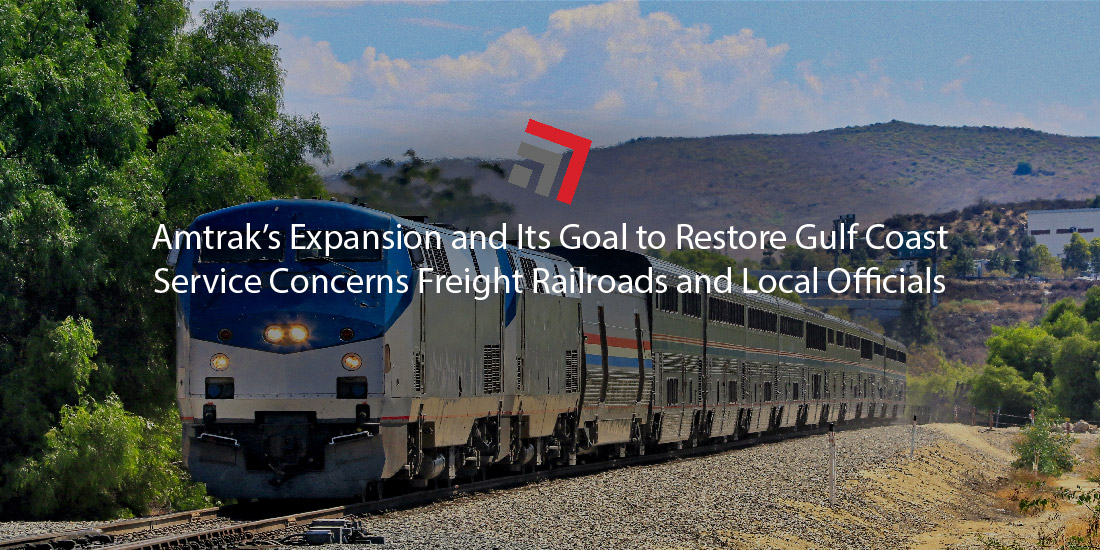Amtrak, a national passenger railroad service and an iconic fixture of American transportation, has recently received support for its expansion throughout the U.S.
Etched into the language of the colossal $1.2 billion infrastructure bill, Amtrak, a federally owned enterprise, will be given several grants, reforms, and safety upgrades to its operations.
Good deal, right? Amtrak is beloved by all and unites our country over large distances by rail.
Freight Railroad Concerns of Amtrak Expansion
Not everyone sees expansion efforts for Amtrak as an ideal pursuit. Certainly, not railroad freighters. Data gathered by the Association of American Railroads (AAR) reveals 97 percent of Amtrak’s 22,000-mile network uses tracks owned and maintained by the freight railroads. The fear among stakeholders in the rail freight industry is that expanding passenger rail service will jeopardize freight rail operations. Furthermore, they vehemently assert this issue will extend onto the shippers and ports that rely on the smooth workings of the freight rail system.
With Amtrak’s expansion efforts for passenger rail meeting friction, a critical question surfaces: How can freight rail and passenger rail both be accommodated?
This question has been forwarded to the Surface Transportation Board (STB), a federal board that presides over surface-transportation disputes. The board has authoritative powers to limit or omit regulatory requirements when appropriate.
Amtrak’s Efforts to Restore Gulf Coast Service
STB instituted proceedings that unveiled Amtrak’s desire for the STB to require prominent freight railroad companies Norfolk Southern and CSX to allow Amtrak to use their tracks between Mobile, AL and New Orleans, LA. This would effectively restore Amtrak service to cities along the Gulf Coast where its rail infrastructure prior had been wiped out by the infamous Hurricane Katrina in 2005.
According to Freight Waves, the Port of Mobile has enjoyed significant growth since 2005 and its success is crucial for the state’s economy.
Present at the hearing were speakers for and against Amtrak’s request. Freight Waves reported that this included local and state officials who each had their own respective input and opinions. Additionally, representatives from CSX, Norfolk Southern, Amtrak, and Alabama State Port Authority presented their respective cases March 9.
The City and Port of Mobile Make Their Case
As soon as STB announced proceedings were in place, the Alabama State Port Authority was adamant to chime in as an active party as it sees alterations to freight rail service directly effecting shippers’ accessibility and use of the Port of Mobile. Additionally, via Freight Waves, Sandy Stimpson, mayor of Mobile, asserted that coal cargo has grown by 50 percent in the last 15 years and container rail has grown by 139 percent. Overall, they allude to the success the port has seen since 2005—the last time Amtrak was operating there.
Final Thoughts
One assurance that comes from these proceedings is the broader issue this presents for the country. How do passenger rail services and freight railroads accommodate for one another?
The situation in Mobile could certainly take place in any other U.S. city as Amtrak does use 97 percent of freight railroad-owned tracks. Ian Jeffries, president of AAR, agrees that collaboration is necessary and that all parties must recognize “the challenges that railroads face, especially as it pertains to newer expanded passenger rail service,” he told Freight Waves.
Please do not hesitate to contact one of our team members if you have any further questions on this topic or any others in domestic logistics.



Recent Comments